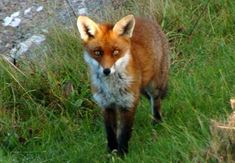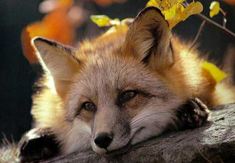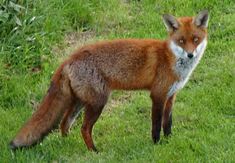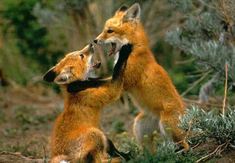Fox
| Category | Mammalia | ||
| Diet | Omnivores, includes rodents, rabbits and other small mammals, reptiles, (such as snakes), amphibians, grasses, berries, fruit, fish, birds, eggs, dung beetles, insects and all other kinds of small animals | ||
| Family | Canidae (Dogs) | ||
| Geographic Range | Red foxes are found throughout much of the northern hemisphere from the Arctic circle to Central America, the steppes of central Asia, and northern Africa. | ||
| Habitat | es utilize a wide range of habitats including forest, tundra, prairie, desert, mountains, farmlands, and urban areas. They prefer mixed vegetation communities, such as edge habitats and mixed scrub and woodland. | ||
| Physical Description | Red foxes are the largest of the Vulpes species. Head and body length ranges from 455 to 900 mm, tail length from 300 to 555 mm, and weight from 3 to 14 kg. Males are slightly larger than females. | ||
| Reproduction | Red fox mating behavior varies substantially. Often males and females are monogamous, but males with multiple female mates are also know, as are male/female pairs that use non-breeding female helpers in raising their young. Females mated to the same male fox may share a den. Red fox groups always have only one breeding male, but that male may also seek mating outside of the group. |
Mating systems
The annual estrous period of female red foxes last from 1 to 6 days. Ovulation is spontaneous and does not require copulation to occur. The exact time of estrous and breeding varies across the broad geographic range of the species: December-January in the south, January-February in the central regions, and February-April in the north. Males will fight during the breeding season. Males have a cycle of fecundity, with full spermatogenesis only occurring from November to March. Females may mate with a number of males but will establish a partnership with only one male. Copulation usually lasts 15 or 20 minutes and is often accompanied by a vocal clamor. Implantation of the fertilized egg occurs between 10 and 14 days after a successful mating. Just before and for a time after giving birth the female remains in or around the den. The male partner will provision his mate with food but does not go into the maternity den. Gestation is typically between 51 and 53 days but can be as short as 49 days or as long as 56 days. Litters vary in size from 1 to 13 pups with an average of 5. Birth weight is between 50 and 150 g. The pups are born blind but open their eyes 9 to 14 days after birth. Pups leave the den 4 or 5 weeks after birth and are fully weaned by 8 to 10 weeks. Mother and pups remain together until the autumn after the birth. Sexual maturity is reached by 10 months.
Red fox males and females, and sometimes their older offspring, cooperate to care for the pups. Young remain in the den for 4 to 5 weeks, where they are cared for and nursed by their mother. They are nursed for 56 to 70 days and are provided with solid food by their parents and older siblings. The young remain with their parents at least until the fall of the year they were born in and will sometimes remain longer, especially females.



